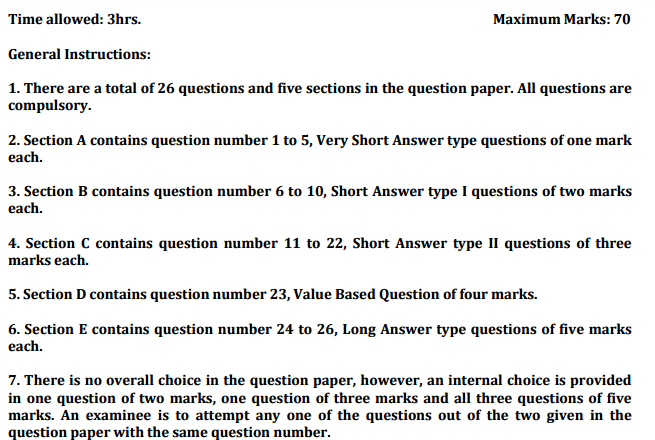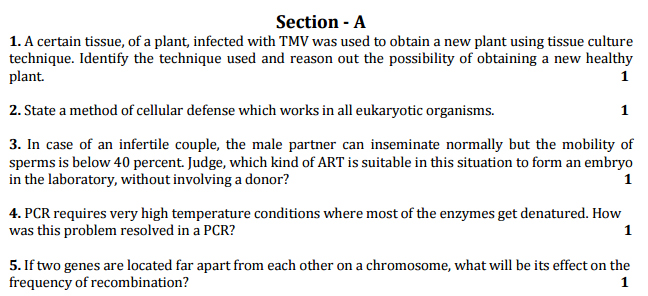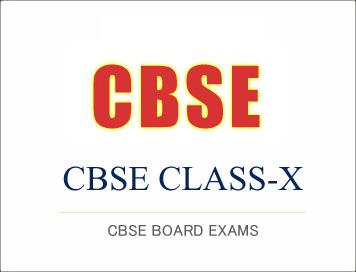
(Download) CBSE Class-12 2016-17 Sample Paper And Marking Scheme (Biotechnology)
Time: 3 Hours
Max. Marks: 70
General Instructions
-
All questions are compulsory
-
Question paper consists of 4 sections A,B,C and D
-
Question numbers 1 to 6 are very short answer questions each carrying one mark
-
Question numbers 7 to 14 are short answer questions each carrying two marks
-
Question numbers 15 to 25 are also short answer questions each carrying three marks
-
Question numbers 26 to 28 are long answer questions each carrying five marks
-
There is no overall choice. However an internal choice has been provided in one question of three marks and two questions of five marks. You have to attempt only one of the choices in such questions.
-
Use of calculators is not permitted. However, you may use log tables, if necessary.
Section A
1. How is oxygen provided in fermentors? 1
2. Why is a pilot plant essential in microbial culture works? 1
3. As a biotechnologist, what would you suggest to a farmer for successful pollination or fertilization in plants.
4. Why do plant cells in culture require nutrient media for growth. 1
5. Why is splitting of animal cells essential? 1
6. Name the first drug to be produced by mammalian cell culture? 1
Section B
7. Which type of restriction enzymes are used in RDT and why? 2
8. Explain in brief any two types of non-covalent interactions found in proteins.
9. Which type of DNA library would you prefer for liver cells. Give proper explanation for making such a library.
10. How can you maximize protein stability during purification?Write any two parameters for the same.
11. Number of genes is not related to the complexity of an organism.Give reasons.12. Calculate the generation time of a bacterial population in which the number of bacteria increase from 104 /ml to 107/ml during four hours of exponential growth.
13. Ti plasmid vector of Agrobacteriuntumefaciens is disarmed.Where is the gene of interest incorporated in Ti plasmid?
14. Why are serum and antibiotics essential as growth supplements for animal cells in culture?
Section C
15. How are pUC 19 vectors used for the selection of recombinants? 3
16. Yeast cells have been transformed with Yep vector containing our gene of interest. How would you select the recombinants over cells not containing the plasmid?
17. Describe the principle of MALDI technique. Write its two main uses in protein studies.
OR
What are the principles behind Iso electric focusing and SDS PAGE techniques? Why is 2D electrophoresis better than single dimension electrophoresis?
18. How is an extracellular protein purified from a fermentation medium? Illustrate the steps with a flowchart.
19. What are SNPs?Explain the relevance of studying these citing any two of their important applications.
20.Graphically differentiate between fed batch and continuous cultures.
Which type of culture system is most suitable for obtaining maximum amount of cellular products?
21. How does the metagenomics approach help to identify novel genes present in the environment? Explain the process.
22. What are edible vaccines? How are they better than conventional vaccines?Give any two points.
23. What are somatic hybrids?How are they produced? 3
24. Give a brief outline of the technique for production of monoclonal antibodies.Why are monoclonal antibodies preferred over serum antibodies in diagnostics and therapeutics?
25. How would you scale up kidney cells grown in culture?







No comments:
Post a Comment